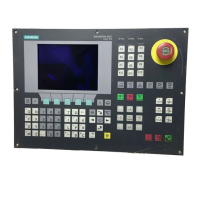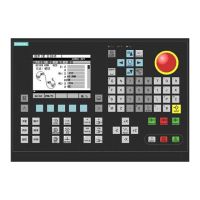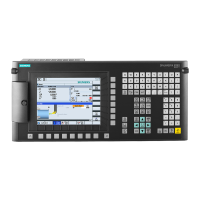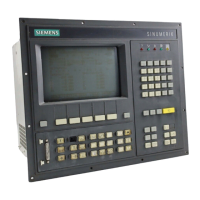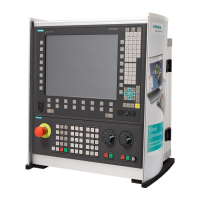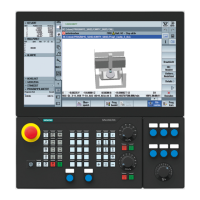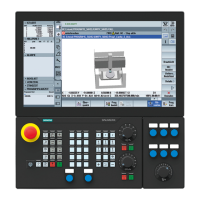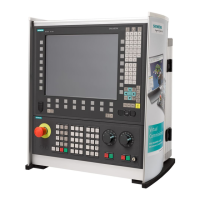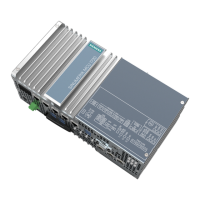Start-Up
SINUMERIK 802S base line
4-19
Start-Up
Table 4–6 PLC data types permitted in the control system
Data Type Size
Address
Alignment
Range for Logic Operations
Range for Arithmetical
Operations
BOOL 1 bit 1 0, 1 -
BYTE 1 byte 1 00 ... FF 0 ... +255
WORD 2 bytes 2 0000 ... FFFF -32 768 ... + 32 767
DWORD
(Double
Word)
4 bytes 4 0000 0000 ... FFFF FFFF -2 147 483 648 ...
+2 147 483 647
REAL 4 bytes 4 - +/-10
-37
... +/-10
38
PLC project
In any case, the PLC 802 Programming tool manages one project (logic
operations, symbols and comments). The download function is intended to
store all important information of a project in a control system.
The control system is able to store max. 4,000 instructions and 1,000 symbols.
The required PLC memory is influenced by the following components:
z
Number of instructions
z
Number and length of the symbol names
z
Number and length of the comments
S7-200
A ladder diagram is a graphical programming language similar to electric circuit
diagrams.
ladder diagram
When creating a program using the ladder diagram form, then you will work
with graphical components to create the networks of your logics. To create your
program, you can use the following elements:
Contacts constitute a switch through which the current can flow. Current,
however, will only flow through a normally open contact if the contact is closed
(logical value 1). Current will flow through a normally closed contact or a
negated contact (NOT) if the contact is open (logical value 0).
Coils constitute a relay or an output which is updated by the signal flow.
Boxes constitute a function (e.g. a timer, counter or arithmetic operation) which
is carried out at the moment when the signal flow reaches the box.
A network consists of the elements mentioned above, forming a closed circuit.
The current flows from the left conductor bar (in the ladder diagram
symbolized by a vertical line at the left window) through the closed contacts,
enabling coils or boxes.
Overview of commands
Table 4–7 Operand identifers
Operand ID Description Range
V Data V0.0 to V79999999.7 (see Table 4-8)
T Timers T0 to T15
C Counters C0 to C31
I Map of digital inputs I0.0 to I7.7
Q Map of digital outputs Q0.0 to Q7.7
M Flags M0.0 to M127.7
SM Special flags SM0.0 to SM 0.6 (see Table 4-10)
AC ACCU AC0 ... AC3
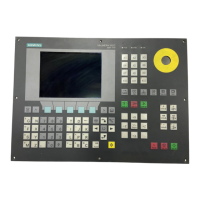
